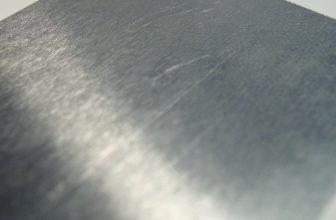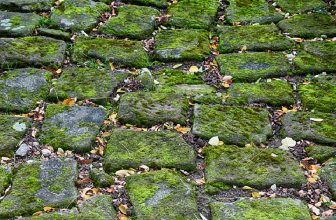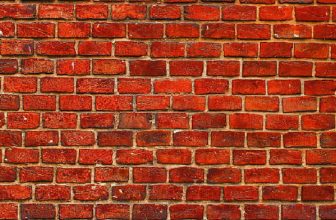How to Clean Heat Pump Coils
Optimizing the efficiency of your heat pump and ensuring its longevity hinges on a fundamental yet often overlooked task—cleaning the heat pump coils. As an integral component of your HVAC system, the coils play a pivotal role in heat exchange.
Over time, dust, debris, and grime can accumulate on these coils, diminishing the unit’s performance and energy efficiency. In this comprehensive guide, we navigate the essential steps of how to clean heat pump coils, addressing common challenges and providing insights into the tools and techniques necessary for the task.

Whether you’re a DIY enthusiast or a homeowner looking to enhance your heat pump’s functionality, this article equips you with the knowledge to undertake this maintenance task with confidence. Join us on a journey to unlock the full potential of your heat pump, as we explore the art of cleaning coils to ensure optimal heating and cooling performance for your home.
Importance of Maintaining Heat Pump Efficiency
Heat pump systems are critical for maintaining a comfortable indoor environment, especially during extreme weather conditions. They provide both heating and cooling capabilities, making them essential for year-round use. However, like any other HVAC system, heat pumps require regular maintenance to function efficiently.
One of the most crucial maintenance tasks for heat pumps is cleaning the coils. The coils play a vital role in the heat transfer process, and any build-up of dirt or debris can significantly affect the system’s efficiency. Therefore, it is essential to understand how to clean heat pump coils and why it is crucial for maintaining overall system efficiency.
Understanding Heat Pump Coils
Heat pump coils are responsible for transferring heat between the indoor and outdoor units of a heat pump system. The evaporator coil, located in the indoor unit, absorbs heat from the air inside your home and transfers it to the outdoor unit. The outdoor condenser coil then releases this heat into the outside air.
The coils are made up of metal fins that provide a large surface area for efficient heat transfer. However, over time, these fins can become clogged with dirt, dust, and other debris, hindering the heat transfer process and reducing the system’s efficiency.

10 Methods How to Clean Heat Pump Coils
1. Vacuuming
Vacuuming is one of the simplest and most effective ways to clean heat pump coils. This method uses a vacuum cleaner to remove dirt, dust, and other debris from the coils. It is important to use a vacuum cleaner with a HEPA filter to ensure that all particles are removed from the coils. Additionally, it is important to be careful when vacuuming, as too much pressure can damage the coils.
2. Washing with Water
Washing heat pump coils with water is another effective way to clean them. This method involves using a garden hose or pressure washer to spray water onto the coils in order to remove dirt and debris. It is important to be careful when washing the coils, as too much pressure can damage them. Additionally, it is important to make sure that all of the water is removed from the coils before turning on the heat pump again.
3. Using an Air Compressor
Using an air compressor is another way to clean heat pump coils. This method involves using compressed air to blow away dirt and debris from the surface of the coils. It is important not to use too much pressure when using an air compressor, as this can damage the fins on the coil surface. Additionally, it is important to make sure that all of the dust and debris are completely removed before turning on the heat pump again.
4. Cleaning with Baking Soda and Vinegar
Cleaning heat pump coils with baking soda and vinegar is another simple yet effective method for cleaning them. This method involves mixing baking soda and vinegar together in a spray bottle and then spraying it onto the surface of the coils in order to loosen up any dirt or debris that may be present on them. After allowing it to sit for several minutes, you can then rinse off with water or vacuum away any remaining residue from the surface of the coil’s fins.
5. Cleaning with Detergent
Cleaning heat pump coils with detergent can also be an effective way to remove dirt and debris from their surfaces without causing any damage to them. This method involves mixing detergent with hot water in a bucket and then using a soft brush or cloth dipped into this solution in order to scrub away any buildup on the coil’s surfaces without scratching them up or causing any other kind of damage in doing so.

6. Using Alkaline-Based Cleaners
Alkaline-based cleaners such as ammonia or bleach can also be used for cleaning heat pump coils if necessary but should only be done so carefully due to their corrosive nature, which could potentially cause harm if not handled properly.
When using these cleaners, always make sure that you dilute them first before applying them directly onto your coil surface. Additionally, you should never mix different types of alkaline-based cleaners together as this could create dangerous fumes that may cause harm if inhaled.
7. Using Acidic-Based Cleaners
Using acidic-based cleaners such as white vinegar or lemon juice can also be useful for cleaning your heat pump’s coil surfaces but should only be done so carefully due to their corrosive nature, which could potentially cause harm if not handled properly . When using these cleaners, always make sure that you dilute them first before applying them directly onto your coil surface.
Additionally, you should never mix different types of acidic-based cleaners together as this could create dangerous fumes that may cause harm if inhaled.
8. Brushing Away Debris
Brushing away debris by hand can also be an effective way to remove dirt, dust, leaves, twigs, etc from your heat pump’s coil surfaces without causing any damage in doing so. You will need a soft brush such as a paintbrush or toothbrush in order to do this effectively without scratching up any part of your coil’s fins during the brushing process.
9. Using Foam Cleaner
Using foam cleaner specifically designed for cleaning HVAC systems, such as foaming coil cleaner, can also help get rid of buildup on your heat coils more effectively than other methods listed above while still being gentle enough so as not to cause any damage while doing so.
Simply spray some foam cleaner onto the affected area and wait a few minutes until the foam starts working its magic before wiping away excess residue left behind afterward, either by hand or soft cloth/sponge, whichever preferred choice might be.

10. Replacing Filters Regularly
Last but certainly not least replacing filters regularly ( usually every 3 months ) helps keep your system running at peak efficiency by preventing build up from accumulating over time thus reducing risk potential problems occurring down road due clogged filters blocking airflow through system. Additionally, regular filter replacements can also help improve indoor air quality and prevent potential health issues caused by dirty air filters.
Things to Consider When Cleaning Heat Pump Coils
Heat pump coils are an essential component of any heating and cooling system. They play a crucial role in transferring heat between the indoor and outdoor units, making it possible for your home to remain comfortable year-round. However, like any other part of your HVAC system, heat pump coils require regular maintenance to function efficiently.
One of the most important maintenance tasks is cleaning the heat pump coils. Over time, these coils can become clogged with dirt, debris, and other particles, reducing their effectiveness and potentially causing damage to your system. In this guide, we will discuss some key things to consider when cleaning your heat pump coils to ensure they are properly maintained.
Importance of Cleaning Heat Pump Coils
As mentioned earlier, heat pump coils play a critical role in the functioning of your HVAC system. When they become dirty or clogged, it can affect the overall efficiency of your system, leading to higher energy bills and potential breakdowns. Here are some other reasons why cleaning heat pump coils is important:
- Improved Indoor Air Quality: Dirty coils can harbor bacteria, mold, and other allergens that can negatively impact the air quality in your home.
- Extended Lifespan of Your System: Regular maintenance, including cleaning the coils, can help prolong the life of your heat pump and prevent costly repairs or replacements.
- Better Heating and Cooling Performance: Clean coils allow for better heat transfer, resulting in more efficient heating and cooling of your home.

Conclusion
Taking the appropriate steps to clean your heat pump coils is key to maintaining a consistent, efficient heating system. By following the steps outlined in this blog, you can avoid costly repairs and maintain a cleaner home environment free from hazardous pollutants and allergens. Remember that cleaning your coils regularly will save money and energy; plus, it can increase the longevity of your system.
Hopefully, this blog post has given you enough insight on how to clean heat pump coils so you can approach it with confidence the next time you have to do it. Don’t delay – start cleaning today for fresh air tomorrow!




